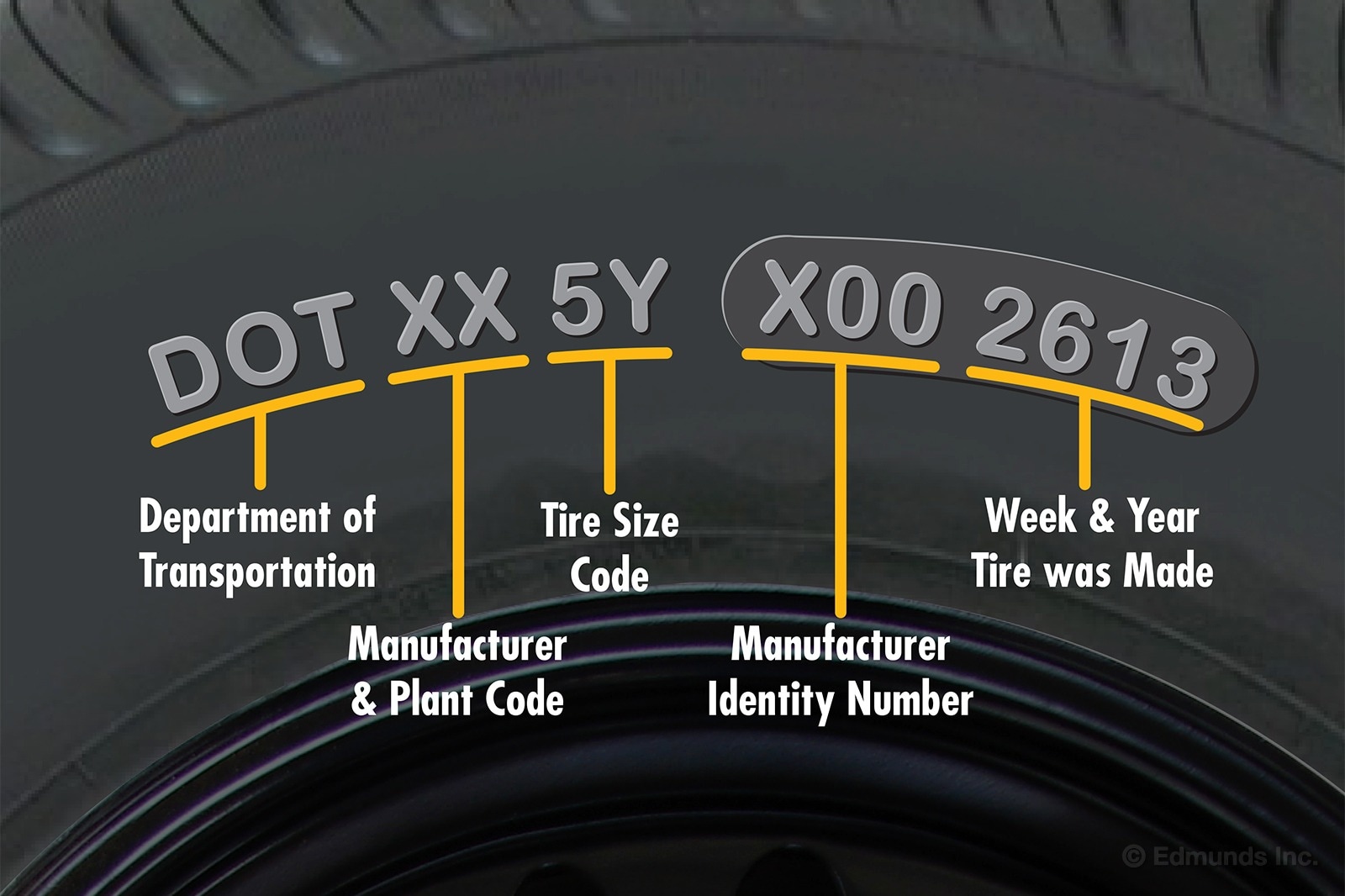How to Know Age of Tires
To know the age of tires, look for the DOT number on the tire sidewall. The last four digits indicate the week and year of manufacture.
Determining the age of tires is crucial for road safety, as older tires can pose a higher risk of blowouts and tread separation. Understanding the age of your tires allows you to make informed decisions about when to replace them.
By checking the DOT number regularly, you can ensure that your tires are safe and reliable for your driving needs. Proper maintenance and timely replacements can help prevent accidents and ensure optimal performance on the road.

Credit: www.tirebuyer.com
Inspecting The Tires
When inspecting the tires to determine their age, it’s crucial to carefully examine different components. By paying attention to specific details, you can accurately gauge the age of your tires and ensure your safety on the road.
Checking For The Dot Code
Start by locating the Department of Transportation (DOT) code on the tire. This code typically consists of 10-12 characters and is located on the sidewall of the tire. The last four digits of the DOT code indicate the week and year of manufacture.
Examining The Sidewall
Inspect the sidewall of the tire for any signs of aging, such as cracking, bulging, or dry rot. These visible indicators can provide valuable insight into the overall condition and age of the tire. Additionally, look for the manufacturer’s symbol, which can help in identifying the production date.

Credit: m.youtube.com
Understanding The Dot Code
Understanding the DOT Code is crucial in determining the age of tires. Deciphering the various markings on the tire can provide valuable insight into when they were manufactured and how long they have been in use.
Decoding The Dot Code
The Department of Transportation (DOT) code is a series of alphanumeric characters typically located on the sidewall of a tire. This code holds the key to unlocking important information about the tire, including the manufacturing date.
Identifying The Manufacturing Date
To identify the manufacturing date from the DOT code, look for the last four digits. The first two digits represent the week of manufacture, while the last two digits indicate the year. For example, if the code ends in “2419,” the tire was manufactured in the 24th week of 2019.
Detecting Signs Of Aging
Checking for dry rot: Dry rot is an indication of aging, seen as cracks on the tire surface. Inspect for any visible cracks or lines.
Examining the tread wear: Look for uneven wearing of treads. If treads appear shallow, it’s a sign of aging and reduced traction.
Consulting A Professional
When it comes to determining the age and condition of your tires, consulting a professional is invaluable. A tire expert can provide you with the necessary guidance and advice to ensure your safety on the road.
Getting A Professional Opinion
Consulting a professional for the age of your tires is crucial, especially when you are unsure about their condition. Tire experts have the knowledge and experience to accurately assess the age and overall quality of your tires, giving you peace of mind when it comes to your vehicle’s safety.
Seeking Advice From A Tire Expert
When seeking advice about the age of your tires, it’s important to turn to a qualified professional with the expertise to accurately evaluate tire condition and age. By consulting a tire expert, you can gain valuable insights and recommendations on whether your tires need to be replaced.
Replacing Old Tires
Knowing the age of your tires is crucial for your safety. Look for a four-digit code on the sidewall that indicates the week and year of manufacture, then replace tires that are older than six years to ensure optimal performance and grip on the road.
Knowing When To Replace
It’s essential to know when to replace your tires to ensure your safety on the road. Here are a few key indicators that your tires may need to be replaced:- Tread Wear: Inspect your tire tread regularly by performing the penny test. Place a penny upside down in the tread groove. If the top of Lincoln’s head is visible, your tread is worn, and it’s time for new tires.
- Tire Age: Tires age over time, even if they haven’t been used frequently. Most manufacturers recommend replacing tires after six years, regardless of their tread depth. You can find the manufacturing date on the sidewall, indicating the week and year the tire was made.
- Cracks or Bulges: Examine your tires for any cracks, cuts, or bulges on the sidewalls or tread surface. These signs indicate potential tire failure, and should be addressed immediately.
- Performance Issues: If you notice vibration, poor handling, or increased braking distance, it could be a sign of tire wear or damage. Have a professional inspect your tires to determine if replacement is necessary.
Choosing The Right Replacement Tires
When it comes to choosing replacement tires, it’s vital to consider your driving needs and the climate you typically encounter. Here are a few factors to keep in mind to ensure you select the right replacement tires:- Tire Size: Refer to your vehicle’s owner’s manual or the sidewall of the current tires to find the right tire size. Choose a size that matches the recommendations for your vehicle.
- Tire Type: Consider the type of driving you do. If you often encounter snowy or icy conditions, winter tires may be necessary. For all-season performance, all-season tires are a suitable option.
- Tire Brands: Research reputable tire brands known for their quality and durability. Reading customer reviews and seeking recommendations from professionals can help you find reliable options.
- Budget: Determine your budget for tire replacement. While it’s important to prioritize safety, you can find options that suit your price range.

Credit: www.edmunds.com
Frequently Asked Questions For How To Know Age Of Tires
How Do You Read Tire Date Codes?
To read tire date codes, look for a four-digit number on the tire’s sidewall. The first two digits represent the week, and the last two indicate the year of manufacture. For example, 2419 would mean the tire was made in the 24th week of 2019.
Are 7 Year Old Tires Safe?
7 year old tires may not be safe due to deterioration. Check for cracks, uneven wear, and aging signs. Consider replacing them for optimal safety.
Where Can I Find The Age Of My Tires?
You can find the age of your tires by checking the DOT number on the tire sidewall. The last four digits indicate the week and year of manufacture.
How Many Years The Tire Will Expire?
The expiration of a tire largely depends on factors such as storage conditions and usage. Generally, tires should be replaced every 6-10 years, even if the tread isn’t worn out, to ensure safety. Regular inspection and adherence to manufacturer guidelines are crucial for tire longevity.
How Can I Determine The Age Of My Tires?
The age of your tires can be determined by locating the DOT code on the sidewall, which includes a four-digit number representing the manufacture date.
Why Is It Important To Know The Age Of My Tires?
Knowing the age of your tires is crucial as they can deteriorate over time, affecting their performance and safety on the road.
What Does The Dot Code On My Tires Signify?
The DOT code on your tires indicates the week and year of manufacture, providing valuable information about their age and lifespan.
Conclusion
Understanding the age of your tires is crucial for safety and performance. By familiarizing yourself with the tire’s DOT code, you can easily determine their manufacture date. Regularly inspecting your tires and consulting a professional for guidance will ensure that you are aware of their condition and can make informed decisions regarding their maintenance and replacement.

